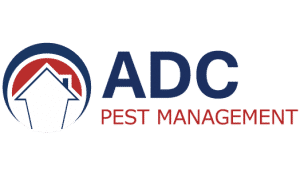Pest Management Treatment Methods
Ants
Cockroaches
Control Methods
Guidelines
Product Pests
Rats & Mice
Risk Management
Spiders
Termites
Training
Weed Management
INTEGRATED PEST MANAGEMENT
The succesful management of pests requires an understanding of pest ecolgy and habits. The aim of ADC Pest Technicians is to undertake a program of Intergrated Pest Management in the treatment and control of pest problems.
NON-CHEMICAL CONTROL METHODS
In certain situations the use of chemical methods in controlling pests is not permitted or not advisable. Sites or producers holding an organic accreditation are restricted in the types of pesticides approved for use. The use of pesticides, particularly rodenticide baits, in food production areas may present a risk of product contamination or sabotage. In areas where there are protected species of animal or plant life, the use of physical methods of control may be selected in preference to pesticides.
RODENT AND OTHER VERTEBRATE TRAPPING
MAMMAL TRAPS
Spring traps, which are designed to kill the rodent, as well as live traps, are available for rats and mice. Sticky or glue board traps are also available for both rats and mice. Traps are extremely useful in areas where it is not possible to use rodenticides, for example, in sensitive food production areas.
LIVE TRAPS
Live catch mouse traps are available in either single or multi catch versions. They can be used as an alternative to toxic baits in high risk/production areas, although the presence of a bait attractant may pose a contamination risk. Cage traps which catch the target animal live are of limited use as a control measure but may be employed when there is a risk to protected species from other methods. Any animal caught should be despatched humanely. Non-target species must be released unharmed.
INSPECTION PERIODS
To avoid causing unnecessary suffering, all traps must be inspected regularly and where these traps are specified, contracts need to allow for this increased level of inspection. This applies to spring and, break-back traps as well as live catch or cage traps because even these traps do not always dispatch the rodent cleanly. The use of pesticides, particularly rodenticide baits, in food production areas may present a risk of product contamination or sabotage.
As a general rule, it is considered good practice to inspect all traps at least once in every 24 hour period. Where traps are placed outdoors, this may need to be increased to at least twice in every 24 hour period for example, in cases where adverse weather or other factors could lead to increased distress.
BIRD TRAPS
Cage traps are usually constructed from wire mesh, into which birds are enticed using a decoy, or suitable bait. Once inside, the bird is prevented from leaving by a cone entrance, bob wires or non-return door. It is a legal requirement that birds are caught alive; non-pest species can then be released and the remaining birds can be humanely dispatched. Traps must be visited at least daily to release or dispatch birds. Food and water must be available in the trap to prevent undue stress.
OTHER (NON-LETHAL) BIRD CONTROL METHODS
Traditional anti-perching systems consist of sprung wire or spike systems and are designed to prevent birds from alighting on ledges or similar surfaces. Electric wire systems are also available.UV stable polyethylene or polypropylene netting with an appropriate mesh size for the species concerned:
19mm for house sparrows
28mm for starlings
50mm for pigeons
75mm for gulls
Will provide permanent exclusion from areas such as loading bay canopies. Bird scaring can be effective using either digitally produced warning and distress calls or birds of prey to deter birds from open areas.
INSECT TRAPPING
The use of insect traps can rarely be relied on as a method of control but can provide evidence of the presence of insect pests andmay in some cases reduce numbers. The main types of insect traps are:
ELECTRIC FLY CONTROL UNITS
(EFK) Flying insects are attracted to the ultra-violet light emitted by the unit and are either trapped on an adhesive board or killed by means of a high voltage electric charge. As UV emission from the unit degrades rapidly lamps should be replaced at between 6-12 months, preferably in spring. EFK units should not be placed:
Outside or by open windows and doors where they will catch non-target species and may attract pests to the site
Beside windows or fluorescent lighting where they will compete with natural sources of UV light
Over food preparation surfaces where there will be a risk of fall-out from the unit
ADHESIVE PADS
The term “detector” better describes the function of adhesive traps. Insects are encouraged to enter the trap by either a food source attractant or pheromone lure and are held on the adhesive surface.
PHEROMONE TRAPS
As with adhesive traps the male insect is attracted by the pheromone released by the lure. Once in the trap the insect may be trapped with an adhesive insert or simply be unable to find its way out. The pheromone is specific to one or a number of related species and acts as an indicator rather than a control method.
